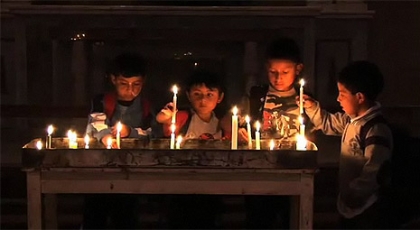This year’s Green Festival in San Francisco featured the Green Web Pavilion organized by Joey Shepp. For the first time at the Green Festival, there was a space dedicated to innovative, Internet-based organizations committed to environmental stewardship and social responsibility.
What else did they have in common? They all use the power of knowledge sharing, collaboration, social networking, transparency, global perspective and diversity in the Web 2.0 landscape to help them accomplish their missions.
The Green Web Pavillion showcased a number of emerging non-profit and business organizations presciently sampled by Joey from many at the forefront of this rising trend. Visitors could learn with presentations and demos about Wiser Earth, TechSoup Global, Global Oneness, GoodGuide, Green Maven, and Yahoo.Green, to name a few.
GoodGuide was among my favorites. This product-ranking Web site began as a UC Berkeley research project, and evolved into a way for consumers to find “safe, healthy and green products.” When you type a product name or category into the search bar, GoodGuide takes you to a ratings page. Products are rated according to health hazard, environmental impact, and social assessment (there are more than 600 base criteria). A single-number score ranks them, and you can further explore it by looking at the health, environmental and social performance scores and additional qualitative information about the product and the company that makes it. You can buy it or include it in your ‘avoid list,’ share your own review and read other reviews. Collecting and processing reliable data to support this site and their product rating is quite a challenge. It looks like GoodGuide is on track, though. If it scales up to a wide variety of products, companies and audience, it can become powerful and significantly change the way we decide to buy, make and sell products to a new level of demand for and supply of better products and companies.
Wiser Earth also carves out an ambitious objective. This online community “maps and connects organizations and individuals addressing the central issues of our day: climate change, poverty, the environment, peace, water, hunger, social justice, conservation, human rights and more.” It’s sort of a combination of Wikipedia, FaceBook, and Google maps – and serves as a directory searchable by area of focus or geographic location of more than 100,000 NGOs – seeking to link like-minded people for practical world-saving activities.
Global Oneness does much the same thing, but on a more focused inspirational plane. It uses the power of video interviews to link people around the world, wake them up to the fact that ‘the world is burning,’ but, even more, that change is possible. As one of the everyday sages in the introductory video asks, “What if this reality could change? What would it look like?” Global Oneness is a celebration of what is ‘being born,’ rather than focusing on what is dying.
At the Green Web Pavilion, I attended a discussion panel among leaders of the featured organizations. There was an insightful debate about how critical it is for new, collaborative networks to extend their activities and interactions out to the ‘physical world.’ The DVD-sharing in homes and communities enabled by Global Oneness and GoodGuide’s accessibility on mobile phones to support real-time decisions at the point of purchase are some examples.
One other interesting discussion triggered by a question from the audience was how these Web 2.0 entities were collaborating to leverage potential synergies between their different initiatives, technology platforms and networks. Global Oneness, for example, has already created a Group on WiserEarth. It became clear that there were still potentially valuable unexplored opportunities for collaboration among all these different organizations, along with the eagerness to pursue them. Finally, big challenges of the ‘Green Web,’ like electronic waste and the digital divides, were rightfully brought into the discussion.
After the panel discussion, I introduced myself to Joey, and asked what he envisions for future editions of the Green Web Pavilion. He wants to grow it at the festival, and was open to new, good ideas. Here’s one: what if we bring into the mix of these Web 2.0 emerging initiatives and organizations those who directly target businesses to change the way they make and sell their products? The festival already features businesses making and selling better products, but they – and countless other companies – can always improve. Further, can they change or improve with the help of consumers attending the festival, perhaps by Web 2.0-powered participatory ecodesign?
Image Credit: globaloneness.com

